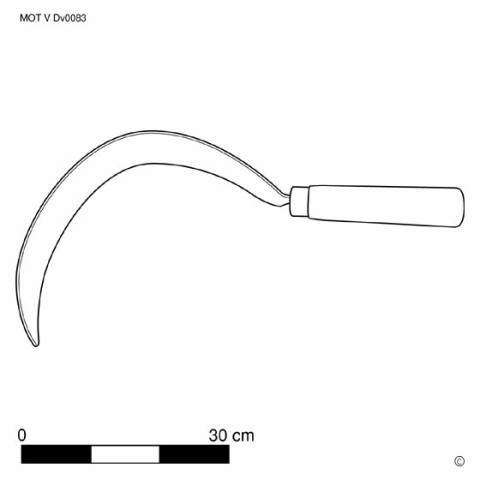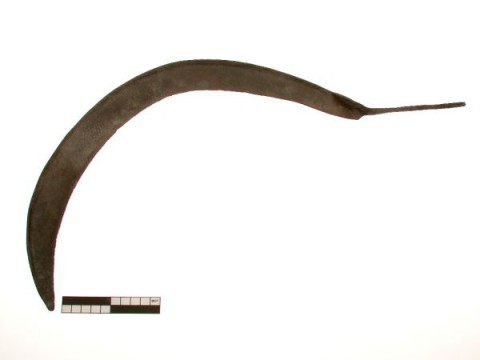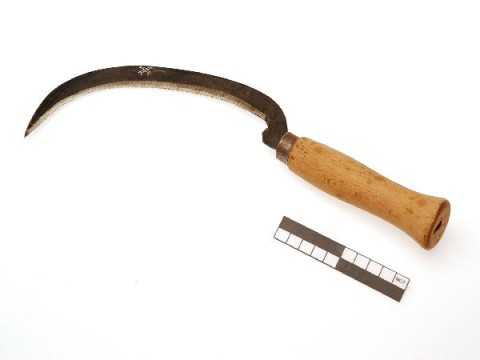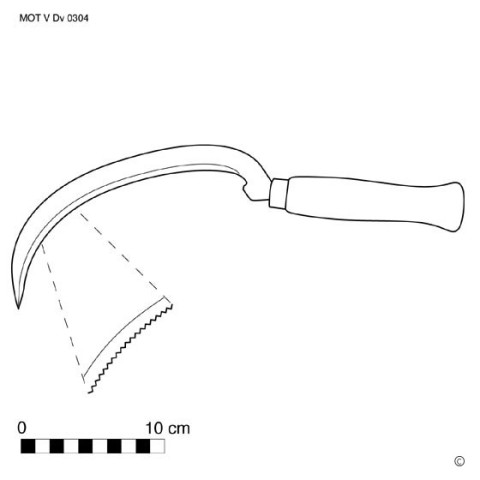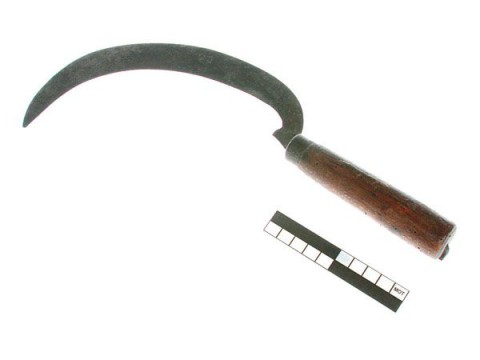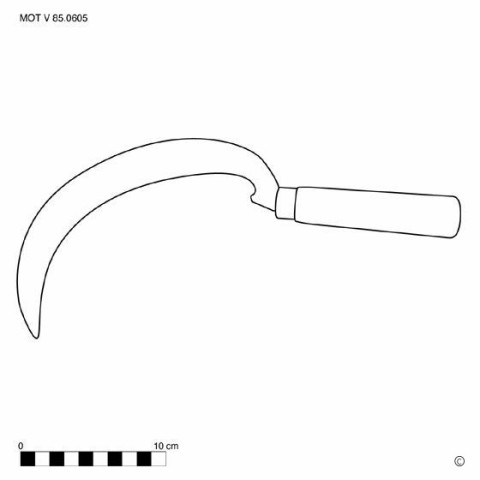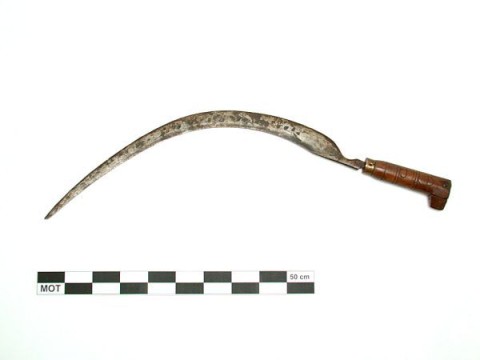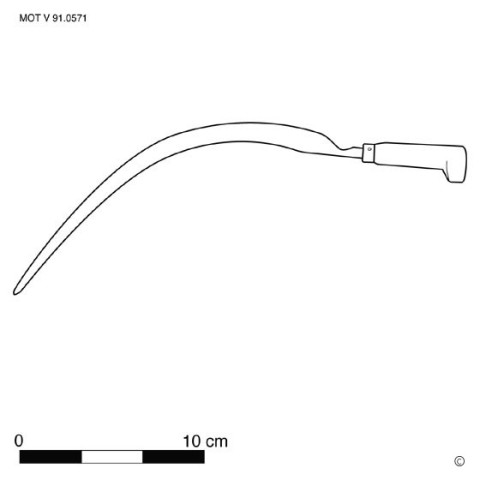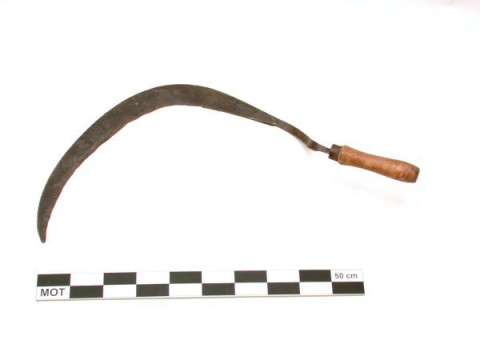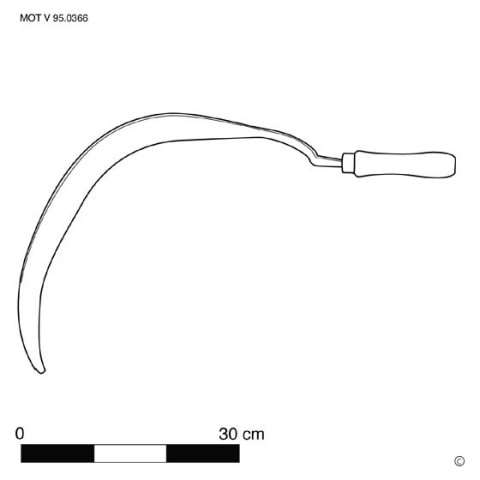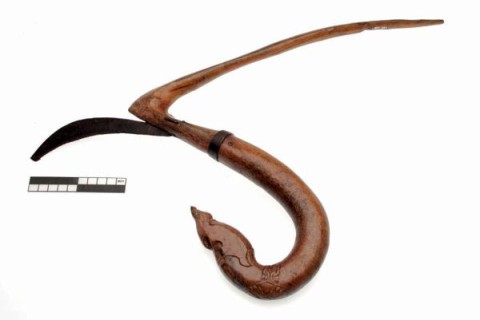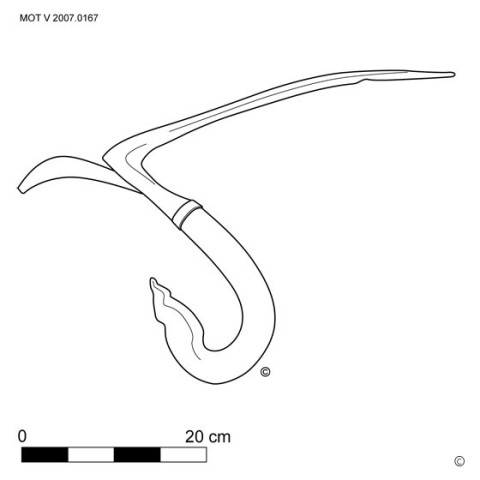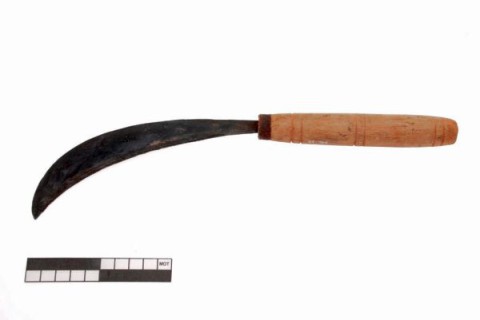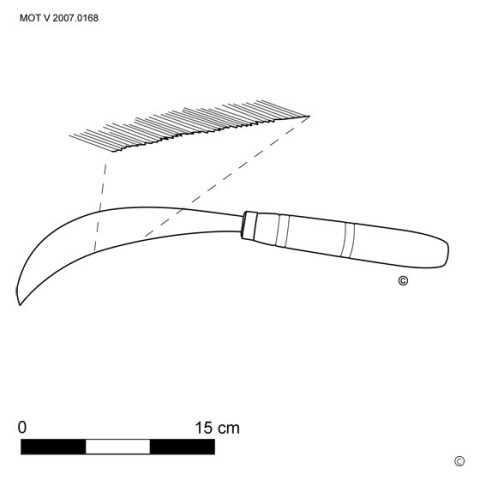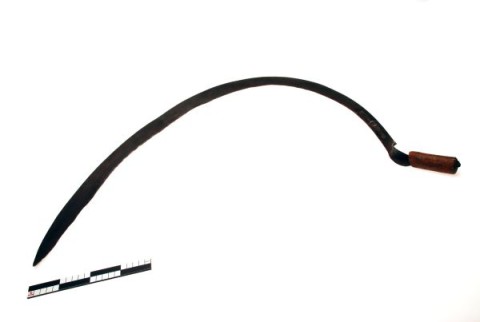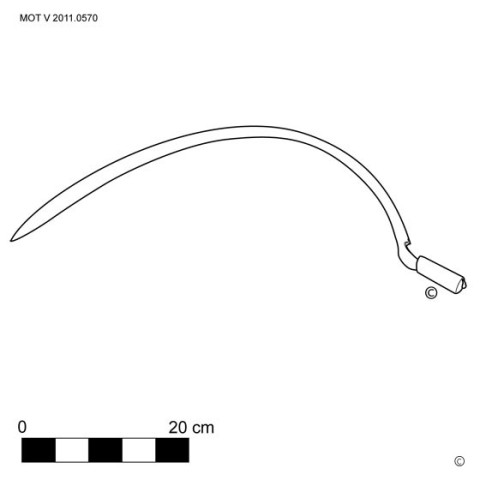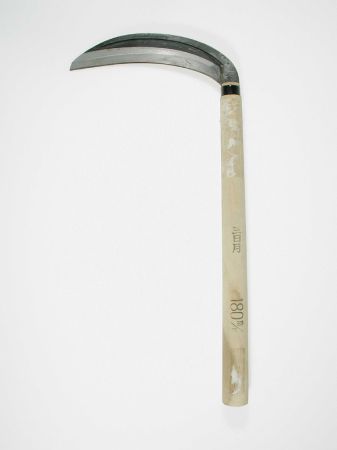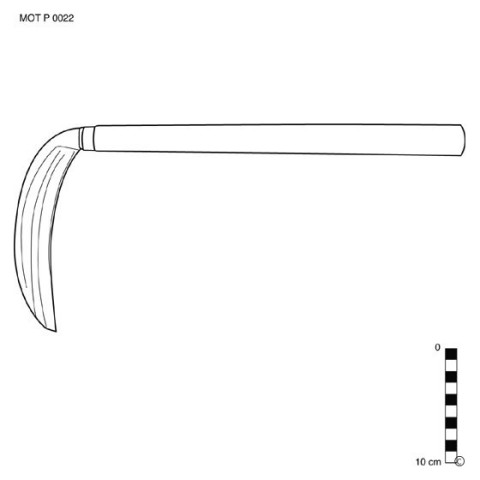Sickle
Hand tool with a crescent-shaped or slightly curved blade (approx. 20-60 cm), the edge of which is sometimes provided with small teeth - oblique to the handle - and attached to a short handle (approx. 10-15 cm).
The sickle, which weighs about 200-500 gr, is used to harvest (winter) grain, grass, beans, etc. With one hand you hold the stems, with the other - in which you keep the sickle - you cut them off. In general, therefore, cutting is done by friction. However, chopping is also done (1).
Exceptionally, a toothed sickle was used as a knife to cut a clod of butter in all directions to get the hairs, straws and the like out (2).
The Japanese sickle has an elongated, relatively short (approx. 15-20 cm) blade that is attached at right angles to an approx. 30-40 cm long stem. The edge is slightly concave; the back is convex and relatively wide (approx. 2-6 mm). That sickle weighs about 150 g and is used to cut grass and to harvest rice; a heavier version (approx. 500 g), for pruning shrubs and plants (cf. billhook).
The sickle with hook (used in Cambodia and the South of Vietnam) is a composite tool with which the culms are bundled together (hook) and cut (leaf).
A rice knife or ani-ani is also used to harvest rice. [MOT]
(1) In Brittany, for example, use is made of a very large sickle (V Dv 0083) with a relatively thick and wide blade (French: volant), with or without a wooden fork.
(2) WEYNS 1974: 929 writes about the butter sickle that allowed the butter merchant to test the inside of a butter lump for fraud.
